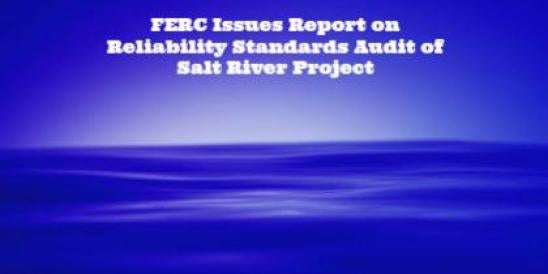The completion of the state of Colorado’s Water Plan on November 19, 2015 reflects a growing trend in western water management away from conflict and towards collaborative discussion. Increasingly, western water managers are opting to pursue more creative, coordinated solutions to complex water issues, built on broad-based stakeholder participation.
Historically, water discussions have been confrontational, divisive, and often exclusive affairs. The 1922 Colorado River Compact, for example, which divided the Colorado River into an Upper and Lower Basin and provided for the allocation of water among seven U.S. basin states, was conducted without the participation of a number of important interests, including Mexico and Indian Tribes, and did not include consideration of environmental values. The subsequent failure of the Lower Basin states of Arizona, California, and Nevada to reach an interstate agreement dividing the share of water allocated to the Lower Basin under the 1922 Compact led to protracted conflict, which was resolved by the U.S. Supreme Court in its 1963 decision in Arizona v. California, apportioning the lower half of the Colorado River among California, Arizona, and Nevada after no interstate agreement could be reached.
In the past few decades, however, water management in western watersheds has shifted focus toward opportunities for cooperation and inclusiveness. Former Assistant Secretary of Water and Science at the U.S. Department of Interior, Anne Castle, confirmed this emerging trend, stating, “[t]here’s a recognition that litigation is a failure, that we need to come together and make things work.”
In late 2012, the United States and Mexico signed Minute 319 to better manage Colorado River water across the international border and to dedicate a portion of the River’s water to the environment. While this agreement garnered national attention and officially took place as a negotiation between federal governments, its success is rooted in local restoration efforts and behind-the-scenes stakeholder participation that was enabled by an inclusive and structured negotiation process under the U.S. State Department.
In another example of collaboration transcending political boundaries in an effort to manage water resources at the watershed level, the same states that participated in the Arizona v. California litigation are currently negotiating an agreement to share shortages and boost water levels in Lake Mead, which controls water deliveries to central Arizona and southern California out of Hoover Dam. The fact that California, a state with a legally superior right to the Colorado River water, has offered to voluntarily cut its water use by hundreds of thousands of acre-feet in order to alleviate the burden on Arizona, is a testament to both the gravity of water supply conditions in the Southwest and the recognized necessity of interstate collaboration and risk-sharing.
Colorado’s State Water Plan has emerged out of this context, and serves as an important example of a western headwater state that is embracing internal collaboration to proactively address present and future water issues. Although the Water Plan was officially finalized just months ago, it reflects a decade-long effort of grassroots discussions rooted in the Basin Roundtable process which began in 2005. A major key to the Water Plan’s successful completion has been stakeholder participation from all sectors as well as consideration of more than 30,000 public comments. This undertaking is reminiscent of the collaborative Minute 319 stakeholder process.
Successful watershed management should be designed to bring together the full range of consumptive and nonconsumptive water interests within a specific watershed. The Water Plan provides guidance and a platform for a coordinated and comprehensive effort, but it is ultimately a voluntary mechanism that will need to be embraced by stakeholders and relevant agencies. In order to be declared a success, it will need to enable proactive and creative collaborative solutions from the planning stage through project completion.
Under the Water Plan, the state will work with water users and stakeholders to ensure financing options are available for planning and implementation efforts in creating future water solutions. Currently, only one-tenth of one percent of the state’s budget goes towards natural resources, and there are large funding gaps for meeting the needs of all sectors. Since the Water Plan’s finalization, the Basin Roundtables’ Basin Implementation Plans (BIP) have proposed a total of 520 projects to meet municipal, industrial, and agricultural needs, at an estimated cost of $20 billion. In addition, the BIPs proposed a total of 474 environmental and recreational projects at a projected cost of $2 to $3 billion.
It is important to recognize that while money for implementing watershed-based projects is frequently available, obtaining funding for planning and ongoing administration and monitoring of such projects remains a difficulty. The Colorado Water Conservation Board is estimated to be currently managing $60 million in USDA Natural Resources Conservation Service’s Emergency Watershed Protection Program grants, and other smaller amounts of federal money are available from the U.S. Forest Service, the U.S. Bureau of Reclamation, the U.S. Army Corps of Engineers, Environmental Protection Agency’s 319 (non-point source pollution) program. These various federal funding avenues are available primarily for project implementation efforts, and there exists an opportunity for funding from other sources to fill, including state funding mechanisms, in the project planning and maintenance funding gaps.
Other related efforts can be used to stimulate innovative funding solutions. For example, updating and reforming Colorado water law to promote greater flexibility and expediency in the use and transfer of water and to facilitate conservation efforts could help stimulate new funding opportunities and break down project barriers. The Water Plan has identified a goal of having 50,000 acre-feet of agricultural water shared with other sectors by 2030 using “alternative transfer methods”, which reduce time and transaction costs, and increase certainty among parties transferring water rights. This type of goal necessitates the need for improved legal and regulatory flexibility.
Other legal and regulatory reforms focused on better integrating land use and water planning efforts would also help implementation of the Water Plan. An express goal of the Water Plan is for the State to increase efficiency and effectiveness in water project permitting while properly mitigating adverse environmental impacts. Eliminating these legal barriers through reform, increased collaboration, and involvement of diverse stakeholder interests in ongoing water discussions throughout the state will aid in achievement of this goal. It is essential to permitting efficiency that collaboration for projects with all interests represented occurs at the outset, so that misunderstandings are ironed out initially instead of causing unnecessary delays down the line.
Colorado’s implementation of its Water Plan offers a laboratory for improved water management in the West. The State’s comprehensive approach serves as a model reflecting recent trends in water management efforts, and similarly situated states and stakeholders within those states should monitor its evolution with interest.




 />i
/>i
